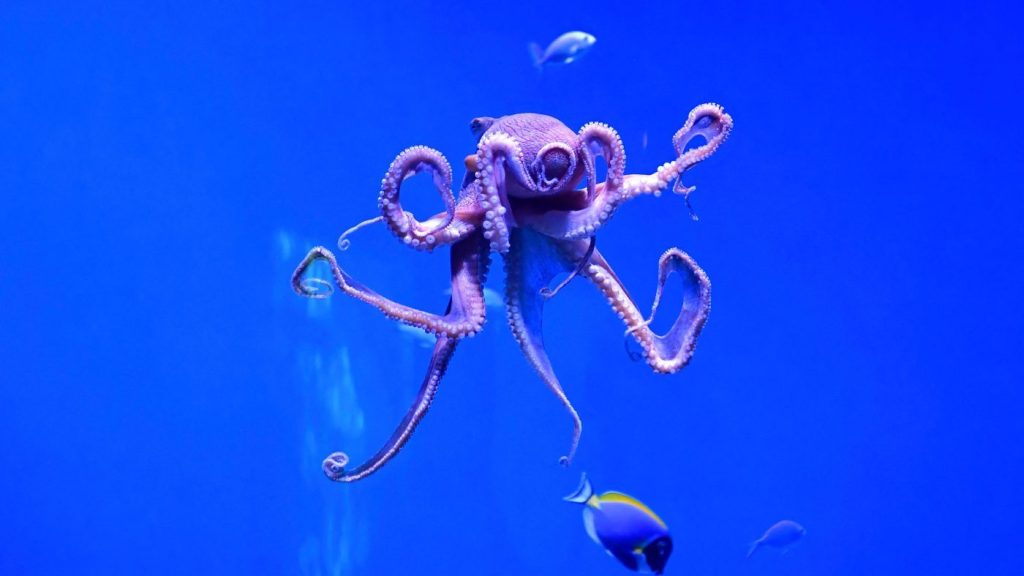A group of thirty-six scientists signed a new statement saying fish, amphibians, molluscs, and insects likely have feelings and experiences.
The New York Declaration on Animal Consciousness states that current scientific research suggests that such widespread animal consciousness is a “realistic possibility” — and that scientists and policymakers must consider this when assessing risks to those animals.
The declaration was released at an event at New York University, where scientists debated the state of the science on animal consciousness, and the wisdom of releasing such a statement.
When considering animal consciousness, signatory Jonathan Birch, a philosopher at the London School of Economics, told attendees that it “immediately brings us into contact with serious imaginative limitations.”
Many classic papers and books struggle with the subject, from philosopher Thomas Nagel’s 1974 paper “What Is It Like to Be a Bat?” to primatologist Franz de Waal’s 2017 book “Are We Smart Enough to Know How Smart Animals Are?”
Many scientists and philosophers have argued that humans’ limitations can hinder us from understanding how sentience might work in other species.
Birch stated that “Sometimes these imaginative limitations lead people to doubt whether the scientific evidence can bear on these questions at all.”
“But I think that’s wrong,” he added. “I don’t personally think that other animals will have a verbal inner monologue in the way that I do. But equally, there are probably forms of consciousness other animals have that we lack,” like the subjective experience of a bat navigating a dark forest using echolocation.
The declaration is brief — just three paragraphs — and its wording is very restrained. It doesn't claim that animal consciousness is certain or proven. Instead, it argues that decades of literature now show “strong scientific support” for the idea that mammals and birds are conscious, and the “realistic possibility” of consciousness in creatures from reptiles to octopi, crabs and insects.
As long as such a possibility exists, the signatories agreed, “we should consider welfare risks and use the evidence to inform our responses to these risks.”
Not all event attendees supported this idea. One scientist in the front row told Birch that he worried the declaration would be seen as irresponsibly overstating the evidence.
“I’m not sure this declaration is a good idea,” he said. All scientists, he said, ”are familiar with articles that summarize research that people do not trust — because they feel they are cherry picking the data, they are relying on studies that are not objective.”
But Birch argued that the declaration was actually quite conservative. “This is not a work of advocacy. It is describing the state of science as fairly as we can.”
He said that even though the people who signed the agreement had different opinions about the levels of animal awareness and the moral consequences, they all agreed that significant progress has been made in the last 10 years and should be part of the discussion.
The study comes out more than 10 years after the Cambridge Declaration on Consciousness. found that mammals, birds, and other animals have the ability to show purposeful actions and that humans are not the only ones with the brain structures that create awareness.
Scientists' understanding of animal awareness has progressed during this time. According to a summary article in Quanta Magazine, “we now know, for example, that octopuses can feel pain and cuttlefish can remember specific past events … and zebra fish display signs of curiosity.”
In the insect world, Quanta noted that “bees demonstrate behaviors that appear to be play, while Drosophila fruit flies have unique sleep patterns affected by their social surroundings. Meanwhile, crayfish exhibit states similar to anxiety — and those states can be changed by anti-anxiety medication.”
One area of study has focused on the growing evidence of self-awareness in fish and reptiles. Reptiles, in particular, are ancestors of both mammals and birds, the two groups with the strongest evidence of consciousness.
“If we accept that mammals and birds are aware, then consciousness either evolved independently at least twice in each group, or it's the basis for all animals, meaning reptiles likely have consciousness as well,” stated Anna Wilkinson, who researches amphibians at the University of Lincoln.
Dealing with the question of whether reptiles or fish feel pain — a significant issue in considering their well-being — Wilkinson admitted that recent research indicates fish have different brain structures than mammals.
But she argued that “just because birds need feathers to fly — that doesn't mean bats can't fly. They don't have feathers — they just accomplish it through a different method.”
“It seems improbable that the type of consciousness reptiles have is similar to that of mammals,” she added. “And this is a challenge that I think we need to address.”









